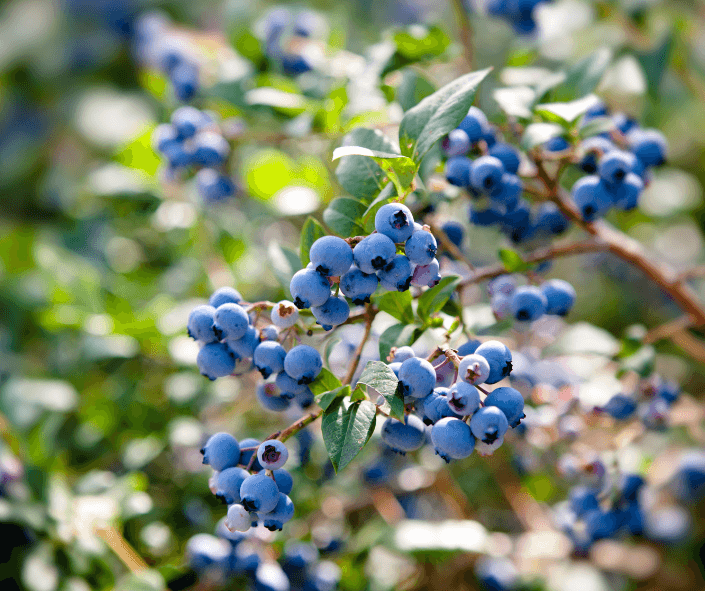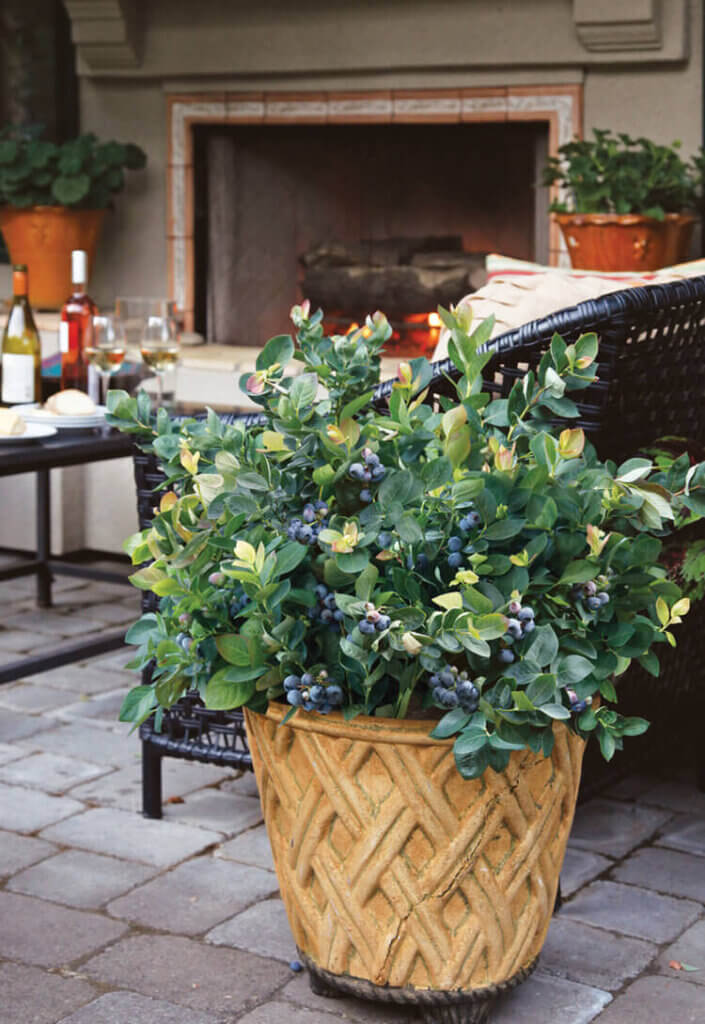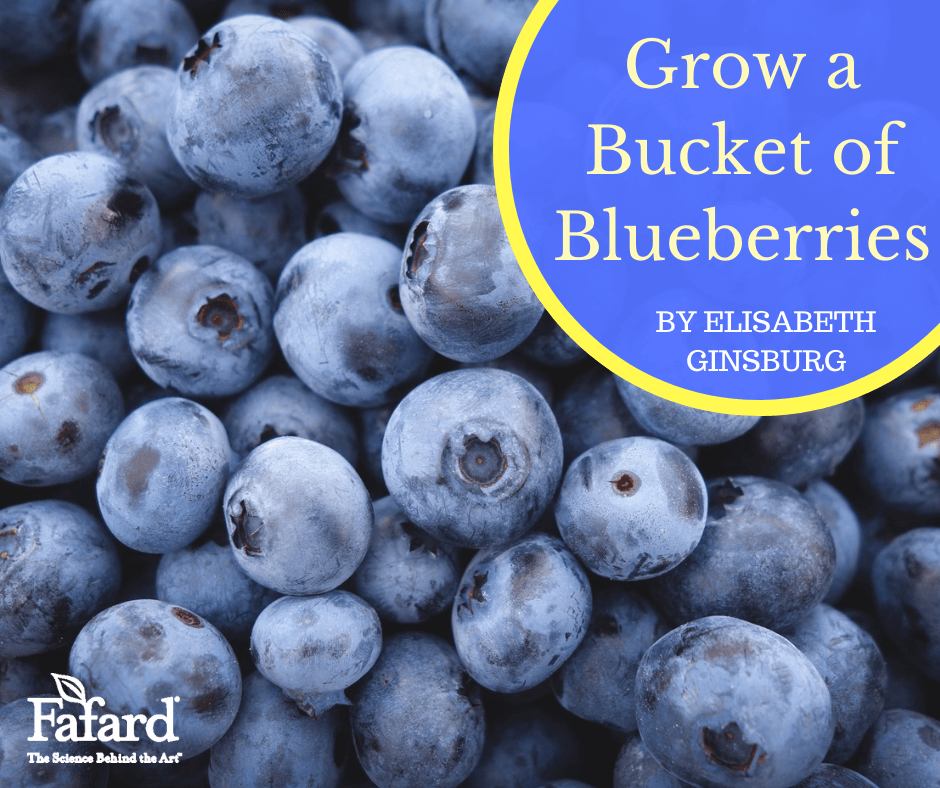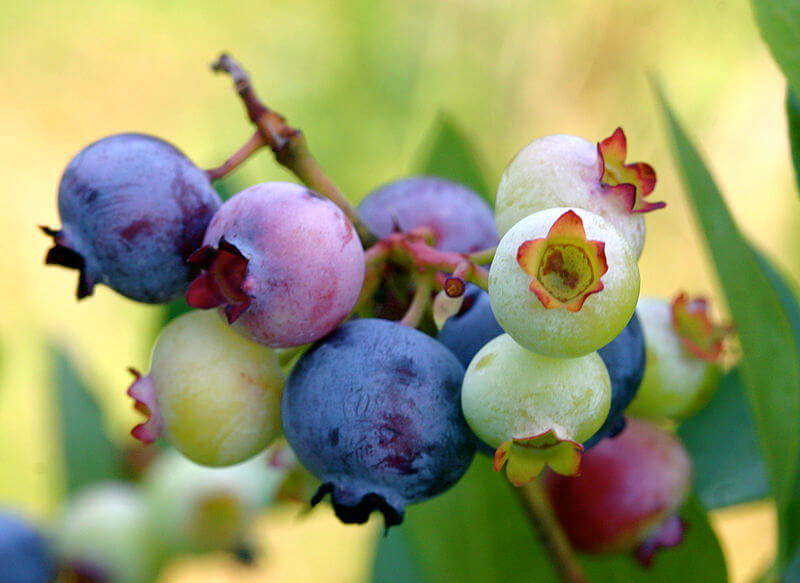
Compact berries for containers are popular, and more and more varieties are being developed for container culture. Compact blueberries are particularly good for growing in pots, with good care. The northern native berries have specific growing needs. Follow the guidelines here, and you will have bountiful berry pots in no time. The best blueberries for containers are shorter species, such as lowbush blueberries (Vaccinium angustifolium) rabbiteye blueberries (Vaccinium ashei), and new compact designer blueberries (Vaccinium hybrids).
Growing Blueberries in Containers

Compact blueberries of all types grow beautifully in spacious pots. With good care, the long-lived shrubs can survive for years, so choose strong, thick, weatherproof ceramic pots big enough for them to grow to maturity–18″ pots or larger depending on the final size of the plant. (click here to read more about the best weatherproof pots)
Blueberries naturally grow best in more acidic soils (pH 4.5-5.5) with good drainage, often sandy soils, so we recommend a peat-based mix amended with some sand and perlite. Of our product line, we recommend Fafard Natural & Organic Potting Mix, which is OMRI Listed for organic gardening and also provides good aeration and porosity. Because blueberries are acid-loving, I like the look of mulching the soil surface with fine, dry white pine needles. They hold moisture, keep weeds down, and look good.
Place your blueberry pots in a location with full to partial sunlight for the best fruiting and growth–more sun is tolerated in areas with milder summers. Blueberries will tolerate shade, but they will not set as much fruit in a shadier site. During the high heat of summer, protect them from the scorching midday sun.
Water blueberries regularly. The soil should be allowed to become slightly dry between watering. Feed blueberries as directed using a fertilizer formulated for acid-loving plants. Repotting is necessary every few years and the shrubs should be pruned if they develop dead growth or crossing, ungainly branches.
Pruning Blueberries
Even compact blueberries need occasional pruning. Here are four guidelines to follow when pruning blueberries.
- Prune just after berry harvest.
- Maintain one strong fruiting cane (branch) for each year of growth, starting in the shrub’s fourth year.
- Older canes can be replaced by stronger, newer fruiting canes after the shrubs have reached 8-10 years.
- Remove smaller, weaker, lateral branches to encourage stronger fruiting branches.
The Best Blueberries for Containers

The best blueberries for containers are shorter species, such as lowbush blueberries (Vaccinium angustifolium, USDA Hardiness Zones 2-8) rabbiteye blueberries (Vaccinium ashei, Zones 7-10), and new compact designer blueberries (Vaccinium hybrids).
Two choice rabbiteye Blueberries are ‘Tifblue’, which has large berries midseason, and ‘Brightwell’, which produces large clusters early to midseason. Bushel and Berry® arguably sell the finest designer Blueberries on the market. Their boxwood-like Blueberry Glaze® and cute, round Jellybean® (Zones 4-8) have delicious fruit, tidy habits, and bright fall color. Finally, Pink Icing® (Zones 5-10) produces loads of tasty fruits on shrubs with pink new growth.
The largest blueberry in the group is the hybrid lowbush blueberry, Northsky®, which forms a tiny round shrub reaching 2-3 feet. The 1-2 foot ‘Tophat‘ is a common favorite. The tidy round bushes product loads of berries once mature and producing.
I encourage blueberry growers to watch the following video to learn more about blueberry cultivation.








